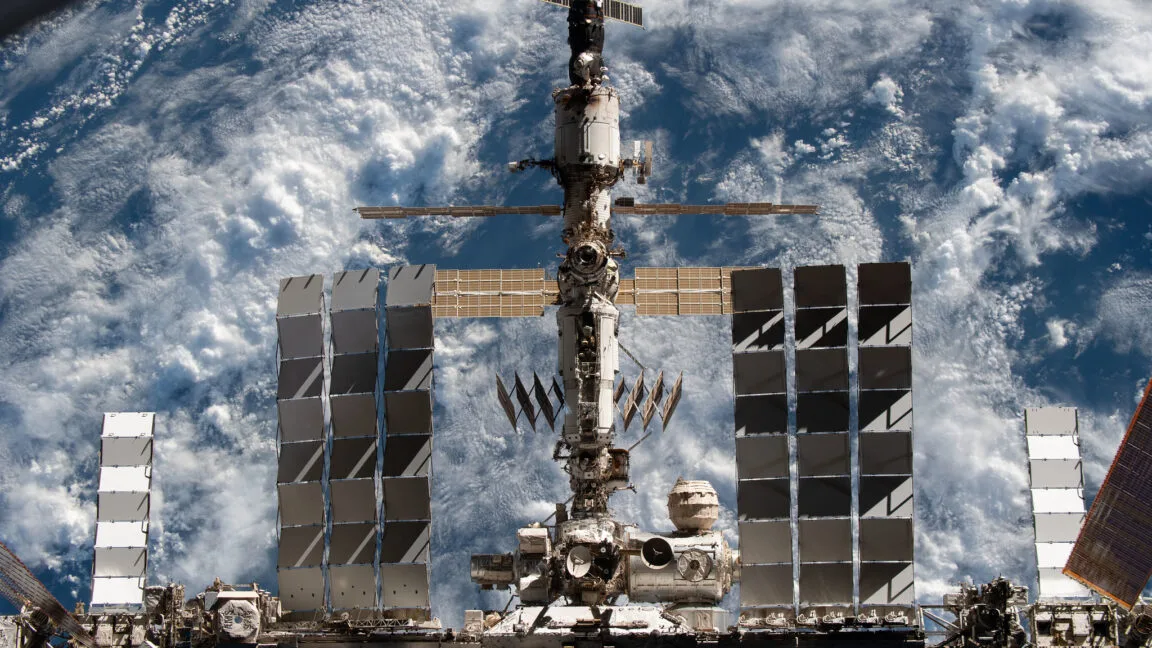The transfer tunnel, known by the Russian acronym PrK, connects the Zvezda module with a docking port where Soyuz crew and Progress resupply spacecraft attach to the station.
Air has been leaking from the transfer tunnel since September 2019. On several occasions, Russian cosmonauts have repaired the cracks and temporarily reduced the leak rate. In February, the leak rate jumped up again to 2.4 pounds per day, then increased to 3.7 pounds per day in April.
“The Russian position is that the most probable cause of the PrK cracks is high cyclic fatigue caused by micro-vibrations,” Cabana said on November 13. “NASA believes the PrK cracks are likely multi-causal, including pressure and mechanical stress, residual stress, material properties, and environmental exposures.”
Crew members aboard the space station are keeping the hatch leading to the PrK closed when they don’t need to access the Progress cargo freighter docked at the other end of the transfer tunnel. Russian cosmonauts must open the hatch to unpack supplies from the Progress or load trash into the ship for disposal.
As a precaution, Barratt said space station crews are also closing the hatch separating the US and Russian sections of the space station when cosmonauts are working in the PrK.



NASA: None of our engineerscan solve this problem.
HVAC guy: Hmm, can’t use soap bubbles in space… maybe if they use some smoke to make the leak visible…
Hilariously water with dye is almost certainly how they’re detecting the leaks position since most of the fun tracer gases are oxygen replacers or straight up toxic.
The only reason to use gases for this on earth is because liquids are too heavy to be sucked towards to small leaks. In space, isn’t there a case to be made to use some small light solids? Not styrofoam because theyre staticky. But if you found something of equivalent density that would float towards the leaks, but didn’t pick up static and could easily be cleaned out of the air filters…it would be useful for this.
High oxygen environment and almost anything in a powder is extremely explosive including plastic and for that matter baking soda. Some things that aren’t even flammable are potentially explosive when powdered, science is weird sometimes.
Plastic yes, baking soda no. What part of baking soda would burn? The molecule is already about as oxidized as it could be.
Shit you’re right I meant flour.
Ah yes, flour can definitely explode if aerosolized.
Restaurant guy: one of your employees probably taking a little smoke break.